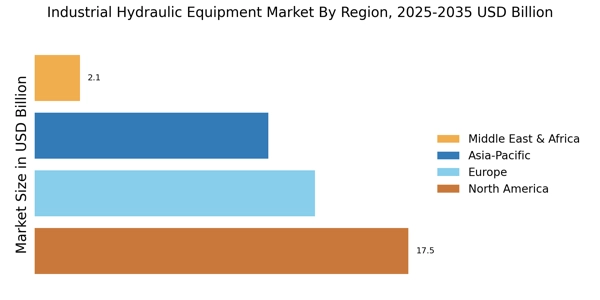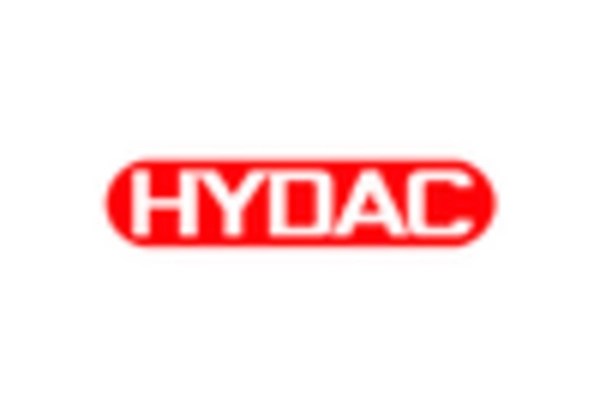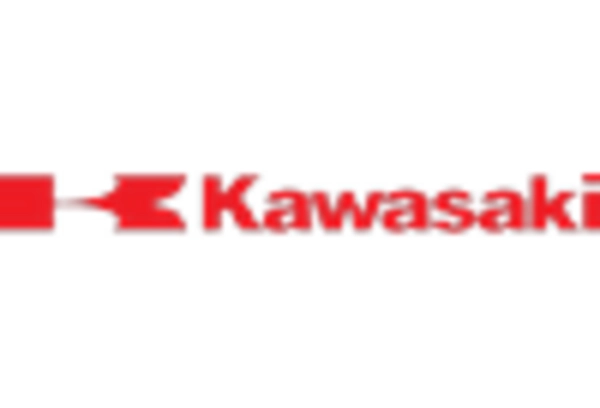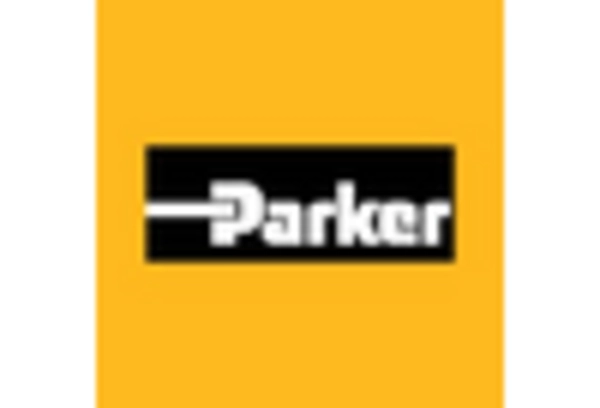Rising Demand for Automation
The Industrial Hydraulic Equipment Market is experiencing a notable surge in demand for automation across various sectors. Industries such as manufacturing, construction, and agriculture are increasingly adopting automated systems to enhance efficiency and productivity. This trend is driven by the need for precision and reduced operational costs. According to recent data, the automation market is projected to grow at a compound annual growth rate of approximately 9% over the next five years. As companies seek to optimize their operations, the integration of hydraulic equipment into automated systems becomes essential. This shift not only improves performance but also reduces human error, thereby fostering a more reliable production environment. Consequently, the rising demand for automation is a significant driver for the Industrial Hydraulic Equipment Market.
Growth in Renewable Energy Sector
The Industrial Hydraulic Equipment Market is positively impacted by the growth in the renewable energy sector. As the world shifts towards sustainable energy sources, there is an increasing demand for hydraulic equipment in the construction and maintenance of renewable energy facilities, such as wind and solar farms. Hydraulic systems are essential for various applications, including the installation of wind turbines and the operation of solar tracking systems. The renewable energy market is projected to expand at a compound annual growth rate of over 8% in the coming years, creating substantial opportunities for hydraulic equipment manufacturers. This growth not only supports the transition to cleaner energy but also drives innovation within the Industrial Hydraulic Equipment Market, as companies develop specialized solutions to meet the unique demands of the renewable sector.
Expansion of Construction Activities
The Industrial Hydraulic Equipment Market is significantly influenced by the expansion of construction activities worldwide. With urbanization and infrastructure development on the rise, there is an increasing need for hydraulic equipment in construction projects. The construction sector is projected to grow at a rate of around 5% annually, leading to heightened demand for hydraulic machinery such as excavators, loaders, and cranes. These machines are vital for efficient material handling and earthmoving tasks. Furthermore, government initiatives aimed at improving infrastructure are likely to bolster this trend, as investments in public works projects create additional opportunities for hydraulic equipment manufacturers. Thus, the expansion of construction activities serves as a crucial driver for the Industrial Hydraulic Equipment Market.
Increasing Focus on Energy Efficiency
The Industrial Hydraulic Equipment Market is witnessing a growing emphasis on energy efficiency, driven by both regulatory requirements and corporate sustainability goals. Companies are increasingly seeking hydraulic solutions that minimize energy consumption while maximizing output. This trend is reflected in the rising demand for energy-efficient hydraulic systems, which are designed to reduce power usage and lower operational costs. According to industry reports, energy-efficient hydraulic equipment can lead to savings of up to 30% in energy costs. As organizations strive to meet environmental standards and reduce their carbon footprint, the focus on energy efficiency is likely to propel the growth of the Industrial Hydraulic Equipment Market. This shift not only benefits the environment but also enhances the competitiveness of businesses.
Technological Advancements in Hydraulic Systems
Technological advancements are playing a pivotal role in shaping the Industrial Hydraulic Equipment Market. Innovations such as the development of energy-efficient hydraulic systems and smart hydraulic components are enhancing the performance and reliability of hydraulic equipment. For instance, the introduction of IoT-enabled hydraulic systems allows for real-time monitoring and predictive maintenance, which can significantly reduce downtime and operational costs. The market for smart hydraulic systems is expected to witness a growth rate of approximately 12% over the next few years. These advancements not only improve the efficiency of hydraulic equipment but also align with the growing emphasis on sustainability and energy conservation. Therefore, technological advancements are a key driver for the Industrial Hydraulic Equipment Market.


















Leave a Comment